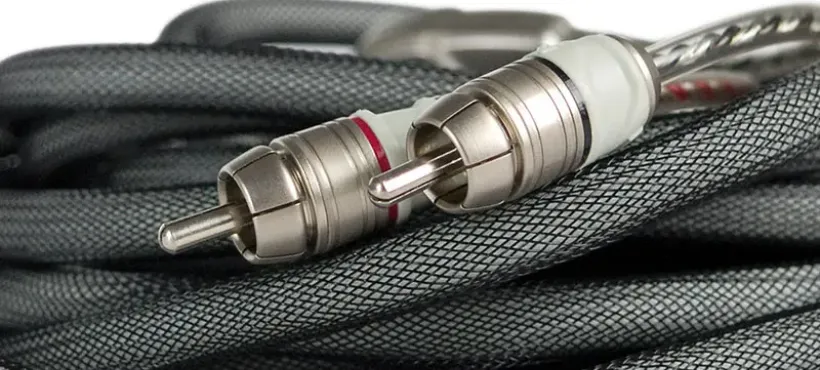The RCA jacks are connectors used by head units to send audio and video signals to the amplifier.
Created by Radio Corporation of America (RCA) back in the 1930s, these connectors are still commonly used to transfer audio/video signals. This is the reason why you can still find them in your TVs, gaming consoles, Turntables, A/V receivers, etc.
If we specifically talk about the car audio, these cables connect the amplifier to the aftermarket car radio and are essential for the amp to work.
But what if the RCA jacks of your car radio are not working?
Or what to do if you have a factory radio?
Many people prefer to keep their factory radios untouched these days (due to the ever-difficult replacement process) and focus on upgrading other components for improving car audio, such as the amplifier.
The problem with this approach is that factory radios don’t come with RCA pre-outs. Hence, you can’t connect an aftermarket amp to your factory radio straight out of the box.
How to Hook Up an Amp Without RCA Jacks
Fortunately, there are a couple of methods you can use to hook up your amp to head unit without RCA jacks.
Use High-Level Amp Inputs
The first thing you should check is whether your amplifier has high-level inputs.
Also called speaker-level inputs, high-level inputs connect wires coming from speaker outputs with the amplifier to transfer signals.
Their voltage level is very high compared to the RCA input. That’s why they’re called high-level input. Similarly, RCA inputs are also called low-level inputs.
Speaker wires carry 3-5 times stronger signals than the RCA wires. Hence, they should be considered if you’re unable to get the maximum power out of your amplifier. It results in a cleaner sound since you don’t have to over-dial the amplifier gain to increase volume levels.
For the most part, using high-level inputs is similar to RCA inputs when installing an amplifier. But instead of plugging RCA cables into their inputs, we’ll plug a harness into the speaker-level inputs of the amplifier. After this, we’ll have to correctly match harness wires with the speaker level outputs of your factory stereo.
As a bonus tip, make sure that the wires are tied together and covered with electrical tape. It will prevent any risk of earthing or humming sound from your car stereo.
Unlike aftermarket stereos where you get a standard color scheme, the OEM factory stereos can come in many different color schemes. So you’ll have to check these wires individually, determine which wire has which function, and then match it to the corresponding wire from the harness (ground to ground, left +ve to left +ve, etc.).
The wiring diagram of your factory stereo will come in handy in such a situation. But if you don’t have any, you can use a multi-meter to identify these wires.
Other than this, not all aftermarket amplifiers come with high-level inputs. It’s especially true for b-grade Chinese models you have picked from Ali express.
Use Line Output Converter (LOC)
The second method we’ll discuss today is the use of LOC.
In case your aftermarket amplifier doesn’t have high-level inputs, there’s LOC for you.
Also known as Line Output Converter, the LOC converts a speaker-level signal to an RCA-level signal.
The speaker output wires are connected to one end of the LOC, while its other end has RCA outputs that can be connected to RCA inputs of the amplifier via RCA cables.
How to Install a Line Output Converter
Here’s how you can install it in your car audio system:
- First, we’ll disconnect the negative battery terminal to prevent the risk of any damage to other components of your vehicle.
- After this, we’ll temporarily uninstall the head unit to check its wiring scheme.
- You’ll also have to check the diagram of your LOC’s speaker wires to understand which color represents which wire. Many times it’s listed to the LOC itself, but you can also check the owner’s manual if it isn’t.
- In this step, we’ll strip each speaker wire of the LOC and connect it to the corresponding speaker-input wire of the head unit (connect the front-left wire to the front-left wire, front-right wire to the front-right wire, ground wire to ground wire, etc.). One important thing to note is that you can use either front or rear speakers’ wires as input, not both.
- After this, you’ll have to make these new connections secure by using a butt connector and electrical tape.
- Plug one end of the RCA cables into the RCA outputs of the LOC and the other end into the RCA inputs of your amplifier.
- Install your head unit back into your vehicle, connect the -ve terminal wire to the battery again, and test the LOC by playing different soundtracks.
You can also watch the video below for better understanding.
